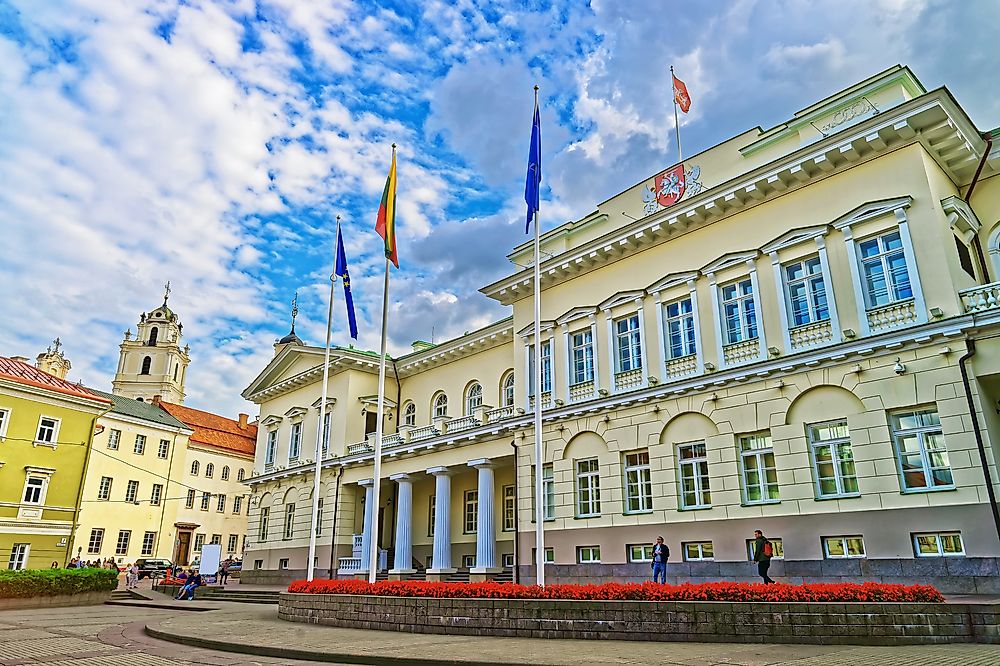Where Does The President Of Lithuania Live?

Prezidentūra is a Lithuanian name for the Presidential Palace which is the official office and residence of the president of Lithuania. The Palace has its roots dating back to the 14th century, and over the centuries it has undergone several reconstructions and modifications by prominent architects such as Vasily Stasov and Vasily Stasov.
Early History Of The Palace
In 1387, Lithuania was converted to Christianity and Jogaila the Grand Duke of Lithuania who later became the king of Poland, founded the diocese of Vilnius, and he donated a piece of land at the edge of the city of Vilnius in which the Palace was built. Andrius Vasila was the first Bishop of Vilnius, and he built the Palace that was highly decorated and the Palace currently is still occasionally regarded as the bishop's Palace. The Palace was later expanded and rebuilt by the successive occupants. According to the remains of written sources, it indicates that the bishop's Palace between 1536 and 1555, when Paulius Olšeniškis was the bishop, the Palace was the second most elaborate Edifice following the royal Castle. Bishop Paulius Olšeniškis was one of the wealthiest Bishops at the time.
The Palace In The 16th Century
The Palace in the 16th century was recorded as having a large park around it, and the landscaping and plants around the Palace surpassed even the famous and the wonderful gardens of Radvilla. Ignotas Jokūbas Masalskis who was the bishop of Vilnius between 1730 and 1762 was the last Bishop to occupy the Palace. Through his orders, the Palace was reconstructed by Laurynas Stuoka-Gucevičius, a famous Lithuanian architect
The Palace In The 17th And 18th Centuries
In the 17th century, the Palace suffered extensive damage from fire. Between 1737 and 1748 the Palace again was extensively damaged by a fire that destroyed several archives of the bishop which were stored in the Palace. Some of the documents destroyed included the Bishops properties and the jurisdiction of The Bishop in Vilnius. When Lithuania was incorporated into the Russian Empire the Palace was converted into a temporary residence of dukes, Russian emperor, and other noblemen. In 1796, the Palace was the residence of Pavel I the Tsar and in 1797, it was the residence of Stanislav August Poniatowski.
The Palace In The 19th Century
In the 19th century, the Palace was the residence of different imperial Russian governors like Mikhail Muravyov who was also known as the Hangman. Similarly, the future King of France Louis XVIII resided in the Palace in 1804 when he visited the Palace. Napoleon, the French emperor and Alexander I the Russian Tsar, made the Palace their residence in 1812. When Napoleon invaded Russia, his military operations were carried out in the Palace. In 1812, when Napoleon was defeated, the Palace was used for ceremonial purposes. Between 1824 and 1834, the Palace was reconstructed by Vasily Stasov, who was a famous architect of St. Petersburg using the Empire style which has remained largely unchanged to this day.
The Palace In The 20th Century To The Present Day
In 1997, the Palace was made the official residence of the president of Lithuania. Two major concepts were followed on its decor when the Palace was prepared to serve as the seat of the country's president. The decorations that had survived the centuries or when the written information was available such as the polychrome decoration were restored to their authentic design. Where no information or evidence existed, it was furnished and decorated following contemporary style but the materials used were typical of classism, such as mahogany.











